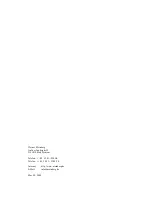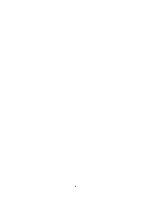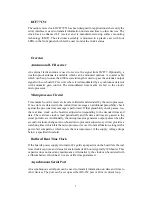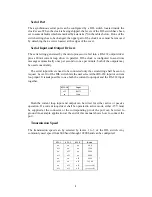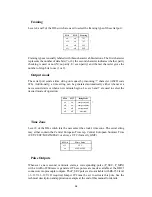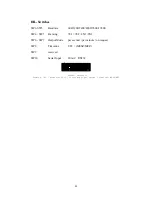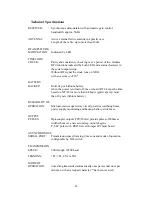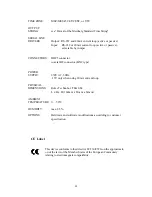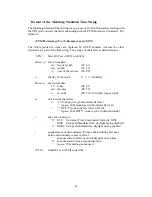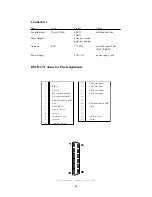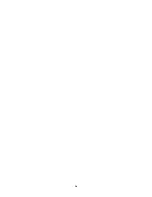
10
Framing
Levers 4 and 5 of the DIL switch are used to select the framing type of the serial port:
SW-4
SW-5
Framing
on
on
7E1
off
on
7E2
*
on
off
8N1
off
off
8N2
Framing types are usually labeled with three-character abbreviations. The first character
represents the number of data bits (7 or 8), the second character indicates whether parity
checking is used or not (N=no parity, E=even parity) and the last character gives the
number of stop bits to use (1 or 2).
Output mode
The serial port sends a time string on request by incoming '?' character (ASCII code
3Fh). Additionally, a time string can be generated automatically either whenever a
new second starts or when a new minute begins. Levers 6 and 7 are used to select the
desired mode of operation:
SW-6
SW-7
String Mode
on
on
once per second
*
off
on
once per minute
on
off
on request only
off
off
(reserved)
Time Zone
Lever 8 of the DIL switch lets the user select the clock's time zone. The serial string
may either contain the Central European Time rsp. Central European Summer Time
(CET/CEST=MEZ/MESZ), or always UTC (formerly GMT).
SW1-8
Time Zone
off
UTC
on
MEZ/MESZ
*
Pulse Outputs
Whenever a new second or minute starts, a corresponding pulse (P_SEC, P_MIN)
with a width of 200msec is generated. These pulses are made available at the DB25
connector via optocoupler outputs. The P_SEC pulse is also available with RS-232 level
(-3..12V/+3..12V). If required, Jumper JP2 must be set to activate this puls. See the
technical description and application example at the end of this manual for details.
Summary of Contents for DCF77C51
Page 1: ...DCF77C51 Technical Information Operating Instructions FUNKUHREN...
Page 4: ......
Page 6: ...6...
Page 16: ...16...
Page 17: ...17 Component Layout...
Page 20: ......


